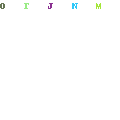Introduction
Beni rugs are more than just decorative pieces; they embody a rich tradition of Moroccan weaving that has been cherished for centuries. Crafted by the Berber tribes of Morocco’s Atlas Mountains, these rugs are renowned for their distinct patterns, luxurious textures, and deep cultural significance. This article explores the world of Beni rugs, delving into their historical background, craftsmanship, design features, and their role in modern interiors.
Historical Background
Beni rugs have been a staple of Moroccan culture for generations. Originating Beni rugs from the Berber tribes, particularly the Beni Ourain and Beni Mguild tribes, these rugs were traditionally used for practical purposes in the harsh mountain climate. They provided warmth and comfort, serving as floor coverings, bedding, and even ceremonial items.
The tradition of weaving Beni rugs is deeply ingrained in Berber culture. The techniques and patterns have been handed down through generations, making each rug a unique representation of the weaver’s personal and tribal heritage. These rugs are not just functional items but are imbued with stories and traditions that reflect the way of life in the Atlas Mountains.
Craftsmanship and Techniques
The process of creating a Beni rug is a meticulous and skilled endeavor:
- Materials: The primary material used in Beni rugs is high-quality wool sourced from local sheep. This wool is prized for its softness, warmth, and durability. It is hand-spun and dyed using natural methods, with dyes derived from plants, minerals, and other organic sources. This results in a rich and varied color palette that enhances the rug’s visual appeal.
- Weaving Techniques: Beni rugs are crafted using the “knotted pile” technique, where individual knots are tied onto a grid of warp threads. This method creates a thick, textured surface that is both durable and visually striking. The complexity of the knotting process and the density of the pile contribute to the rug’s quality and longevity.
Design Features
The designs of Beni rugs are as diverse as their origins, reflecting the unique styles of different Berber tribes:
- Beni Ourain Rugs: These rugs are known for their minimalist and geometric patterns. Common motifs include diamonds, zigzags, and linear designs on a neutral background. The simplicity of Beni Ourain rugs makes them versatile and suitable for a variety of interior styles, from contemporary to classic.
- Beni Mguild Rugs: In contrast, Beni Mguild rugs feature vibrant colors and intricate patterns. These designs often include symbolic motifs related to protection, fertility, and community values. The bold and elaborate patterns of Beni Mguild rugs make them a striking choice for eclectic and bohemian interiors.
Symbolism and Cultural Meaning
Beni rugs are more than just beautiful objects; they are deeply symbolic. The patterns and colors used in these rugs often convey cultural meanings and personal stories. For example, specific motifs might represent protection from evil spirits, fertility, or prosperity. The act of weaving itself is a way for Berber artisans to express their cultural identity and preserve their traditions.
Each rug serves as a narrative, linking the weaver’s personal experiences with the broader cultural themes of their community. This storytelling aspect is a vital part of the rug’s value and significance.
Contemporary Appeal
In recent years, Beni rugs have found a prominent place in global interior design. Their combination of traditional craftsmanship and contemporary style makes them highly sought after. The versatility of Beni rugs allows them to complement various decor themes, from modern and minimalist to rustic and eclectic.
The emphasis on sustainability and ethical production has further boosted the appeal of Beni rugs. Their handmade nature and use of natural materials align with contemporary values of environmental responsibility and artisanal authenticity.
Caring for Beni Rugs
To ensure that a Beni rug remains beautiful and functional, proper care is essential:
- Regular Cleaning: Regular vacuuming helps to keep dust and debris at bay. For more stubborn stains, professional cleaning may be required.
- Rotation: Rotating the rug periodically helps to ensure even wear and prevent uneven fading.
- Sunlight Protection: Keeping the rug out of direct sunlight helps preserve its colors and prevent damage.
Conclusion
Beni rugs are a remarkable blend of Moroccan tradition, artistry, and craftsmanship. Their unique designs, rich textures, and cultural significance make them a treasured addition to any home. By incorporating a Beni rug into your decor, you not only enhance your living space with a touch of Moroccan heritage but also celebrate a centuries-old craft.
Whether appreciated for their artistic beauty or their cultural depth, Beni rugs offer a meaningful and stylish way to elevate your home. Their enduring charm and exceptional craftsmanship ensure that they continue to be a cherished element of Moroccan weaving tradition.
